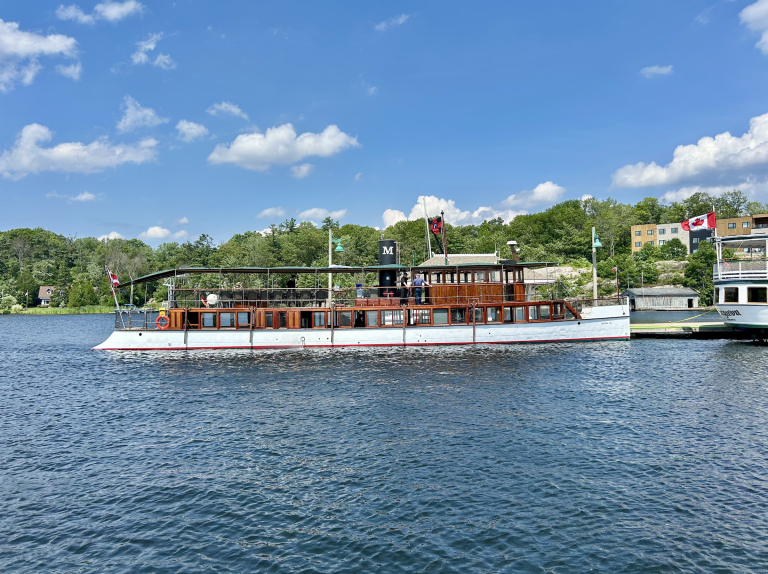Navigating the serene waters under a starlit sky can be one of the most exhilarating experiences for boating enthusiasts. However, as enchanting as night boating may be, it also comes with unique challenges and safety concerns. One of the most critical aspects of ensuring a safe journey after dusk is the proper use of navigation lights. These lights are not just a legal requirement; they are vital for preventing collisions and ensuring that your vessel is visible to others.
In this article, we will discuss essential safety tips for night boating, focusing on the importance of navigation lights, their correct usage, and how they contribute to a secure and enjoyable nocturnal adventure on the water. Whether you’re a seasoned sailor or a novice boater, understanding and adhering to these guidelines can make all the difference in ensuring a safe and memorable night-time voyage.
The Importance of Navigation Lights

Navigation lights are indispensable when boating at night. They serve as the primary communication between vessels in low-visibility conditions. These lights not only delineate the size and type of the boat but also indicate its direction and activity, such as whether it is anchored, under sail, or powered by an engine.
Proper use of navigation lights helps prevent collisions by making your boat visible to others, allowing for timely and safe maneuvers. Moreover, adhering to navigation light protocols is a legal requirement in most jurisdictions, underscoring their critical role in maritime safety. By ensuring that your boat is equipped with the correct lights and that they are functioning properly, you significantly enhance your safety and that of others sharing the water, making night boating a safer and more enjoyable experience for all.
Powerboat Navigation Lights at Night
Navigation lights for small powerboats
For power-driven vessels under 12 meters (39.4 feet) in length, you must use:
- An all-round white light at the front
- Red and green sidelights
Navigation lights for big powerboats
For power-driven vessels 12 meters (39.4 feet) or longer, the rules say you need:
- A white masthead light at the front
- A white stern light
- Red and green sidelights
Navigation lights for powerboats when anchored
When a powerboat is anchored at night, it should show:
- An all-round white light
What is a Properly Lit Sailboat at Night?
Navigation Lights for Sailboats Under 23 Feet
Sailboats less than 23 feet long must display the following lights from sunset to sunrise:
- Sidelights: One green light on the starboard and one red light on the port side.
- Sternlight: One white light at the rear of the boat.
Alternatively, you can use:
- One Lantern: Combines the sidelights and stern light.
- One White Electric Torch or Lantern: Must be used ahead of time to prevent collisions.
Navigation Lights for Sailboats from 23 Feet to Under 65 Feet 7 Inches
For sailboats between 23 feet to just under 65 feet, you need:
- Sidelights: Red and green lights on the sides.
- Sternlight: A white light at the back.
You can also use a lantern that combines these lights.
Optional: You can add two all-around lights at the top of the mast – one red (upper) and one green (lower).
Navigation Lights for Sailboats 65 Feet 7 Inches and Over
Sailboats that are 65 feet 7 inches or longer should have:
- Sidelights: Red and green.
- Sternlight: White.
Optionally, you can add two all-round lights at the mast’s top, with the upper one red and the lower green.
Navigation Lights for Sailboats Operating Under Motor Power
When a sailboat uses its motor, even with sails up, it is considered a powerboat. The required lights are:
- Sidelights: Red and green.
- Masthead Light: A white light near the front.
- Sternlight: A white light at the back.
Navigation Lights for Sailboats at Anchor
When anchored from sunset to sunrise, sailboats must display:
- All-Round Light: A white light visible all around the vessel from the fore part.
Navigation Lights for Kayak or Canoe (Human-Powered Vessels) at Night
Human-powered vessels like kayaks and canoes must have navigation lights during nighttime. While underway, operators should:
- Display sidelights and a stern light if possible.
- If not possible, have a flashlight or a white light lantern ready to prevent collisions.
Commercial Boats Navigation Lights at Night
Commercial boats have specific rules for navigation lights at night. They must display sidelights, a stern light, and other specific lights if they are engaged in special activities such as towing or pushing.
Navigation Lights for a Vessel Engaged in Fishing
Fishing vessels must display the following:
- Sidelights: Red and green.
- Sternlight: A white light at the back.
- All-Around Light: A vertical pair with red over white light to indicate fishing activity when moving through water.
Navigation Lights for a Vessel Engaged in Trawling
A vessel trawling (dragging a net) should have:
- Two All-Round Lights: Green (upper) and white (lower) in a vertical line.
- Sidelights: Red and green.
- Sternlight: A white light at the back.
Navigation Lights for a Government Vessel (Police Boat)
Government vessels, like police boats, may show a blue flashing light to identify themselves when:
- Assisting other vessels.
- Performing law enforcement duties.
Navigation Lights for a Power-Driven Vessel When Towing
Towing vessels must have the following:
- Sidelights: Red and green.
- Sternlight and Towing Light: In a vertical line.
- Two Masthead Lights: In a vertical line.
If the tow exceeds 200 meters, an additional masthead light is required. The towing vessel should also illuminate the towing cable to make it visible to others.
Navigation Lights for a Power-Driven Vessel Pushing Another
A power-driven vessel pushing another should display:
- Sidelights: Red and green.
- Sternlight: One white light at the back.
- Two Superimposed Masthead Lights.
Examples of Navigation Lights

Sailing Vessel Seen from Starboard Side
You will see a green light when you view a sailing vessel from the starboard side. This light indicates the right side of the boat.
Sailing Vessel Seen from the Front
From the front, a sailing vessel shows a red light on the port side and a green light on the starboard side. These lights help you understand the direction the vessel is traveling.
Anchored Power-Driven Vessel
An anchored power-driven vessel will display an all-round white light visible for two nautical miles. This light ensures the vessel is visible in all directions and helps avoid collisions.
Power-Driven Vessel Seen from Starboard Side
When a power-driven vessel is seen from the starboard side, you will see a green and white masthead light. The green light indicates the starboard side, while the white light shows the vessel’s position and orientation.
Power-Driven Vessel Seen from Port Side
You’ll notice a red light and a white masthead light from the port side. The red light represents the port side, and the white masthead light helps identify the vessel’s location and direction of travel.
Power-Driven Vessel Seen from the Stern (Back)
A power-driven vessel shows a white stern light from the stern. This light is important for identifying the vessel’s rear and avoiding collisions from behind.
Frequently Asked Questions
What are the standard boat navigation light requirements per the US Coast Guard?
The US Coast Guard has specific rules for navigation lights to keep everyone safe on the water. Red lights are required on the port (left) side, green lights on the starboard (right) side, and a white light must be visible from the rear of the boat. Boats under 65 feet need these lights displayed from sunset to sunrise and during poor visibility.
Can you explain the color and placement of navigation lights on small to medium-sized boats?
Sure thing! For boats shorter than 65 feet, the lights must be set up like this:
- A red light on the port (left) side.
- A green light on the starboard (right) side.
- A white light at the stern (rear).
These lights help other boats see which direction your boat is going, especially at night or in foggy weather.
What navigation light configurations should be used when a boat is anchored at night?
When your boat is anchored at night, you should display an all-around white light. This light must be visible from all directions, letting other boats know your boat is stationary. This helps avoid collisions in the dark or low-visibility conditions.
How do the SOLAS Regulations affect the navigation lights displayed on boats?
The SOLAS Regulations (Safety of Life at Sea) require boats to have navigation lights that meet international standards. These regulations ensure that the lights are placed correctly and visible from the proper distances, enhancing safety and communication between vessels.
Are there different rules for boat navigation lights depending on the type of waterway?
Yes, navigation lights have different rules depending on where you’re boating. Coastal and inland waters have specific requirements, and it’s essential to follow the local regulations. Always check the local guidelines for any specific rules that might apply to the waterway you’re navigating.
When are navigation lights typically required to be displayed on boats, and are there exceptions?
Navigation lights are usually required to be on from sunset to sunrise. They are also needed when visibility is reduced, such as fog, heavy rain, or snow.
Exceptions might include daytime operations in clear weather where visibility is not an issue. But it’s always good to know and follow local rules.







